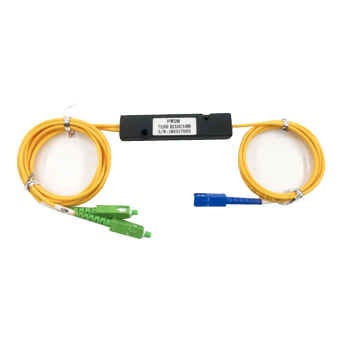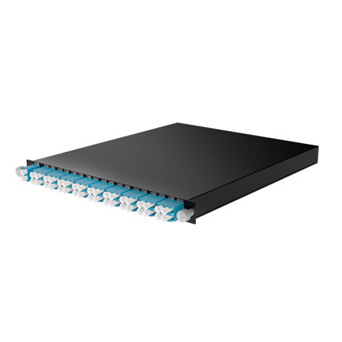1. Introduction of optical transceiver module
The optical transceiver module is composed of optoelectronic device, functional circuit and optical interface. The optoelectronic device includes two parts: transmitting and receiving. Simply put, the function of the optical transceiver module is photoelectric conversion. The sending end converts the electrical signal into optical signal, and then the receiving end converts the optical signal into electrical signal after transmission through the optical fiber. Optical module is used to transmit data between switches and devices. Compared with transceivers, optical transceiver modules are more efficient and secure. Optical modules are classified into SFP, SFP+, SFP28, QSFP+, QSFP28, and so on.
2. The structure of the optical transceiver module
The transmission part of the optical transceiver module is: the electrical signal input a certain bit rate is processed by the internal driver chip and then drives the semiconductor laser (LD) or light-emitting diode (LED) to emit the corresponding rate of the modulation optical signal, which is equipped with an automatic optical power control circuit, so that the output optical signal power is stable.
The receiving part of the optical transceiver module is: the optical signal of a certain bit rate is input into the module and converted into an electrical signal by the optical detection diode, and then the electrical signal of the corresponding bit rate is output after the preamplifier.
3. Classification of optical transceiver modules
Optical modules include optical receiving module, optical transmitting module, optical transceiver integrated module, and optical forwarding module. The main function of optical transceiver integration module is to realize photoelectric/electro-optical conversion, including optical power control, modulation and transmission, signal detection, Ⅳ conversion and limiting amplification decision regeneration function, in addition to security information query, TX-disable and other functions, common are: SFP, SFF, SFP+, GBIC, XFP, 1x9, SFP28, QSFP+, QSFP28, etc.
In addition to the photoelectric conversion function, the optical forwarding module also integrates many signal processing functions, such as: MUX/DEMUX, CDR, function control, performance acquisition and monitoring. Common optical forwarding modules include 200/300pin, XENPAK, X2/XPAK, etc. Optical transceiver integrated module is an important component in optical fiber communication system.
Optical modules are classified by parameters - pluggability, hot swap and non - hot swap. Package form: SFP, XFP, Xenpak, SFP+, X2, 1X9, SFP28, QSFP+, QSFP28 and other products PHXFIBER can be provided. Transmission rate: The transmission rate refers to the number of bits transmitted per second, in Mb/s or Gb/s. Optical module products cover the following main rates: low rate, 100 gigabit, Gigabit, 2.5G, 4.25G, 4.9G, 6G, 8G, 10G, 40G, 100G and 200G.

 EN
EN



